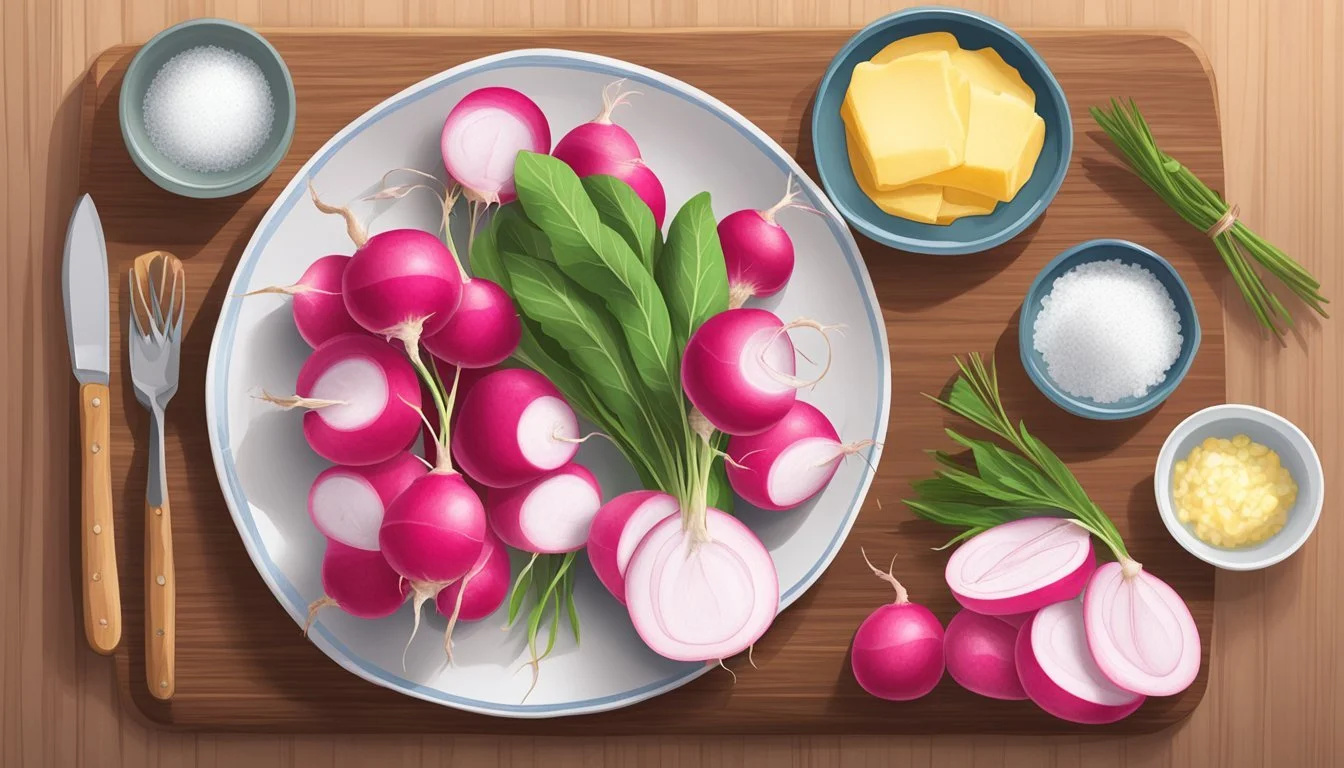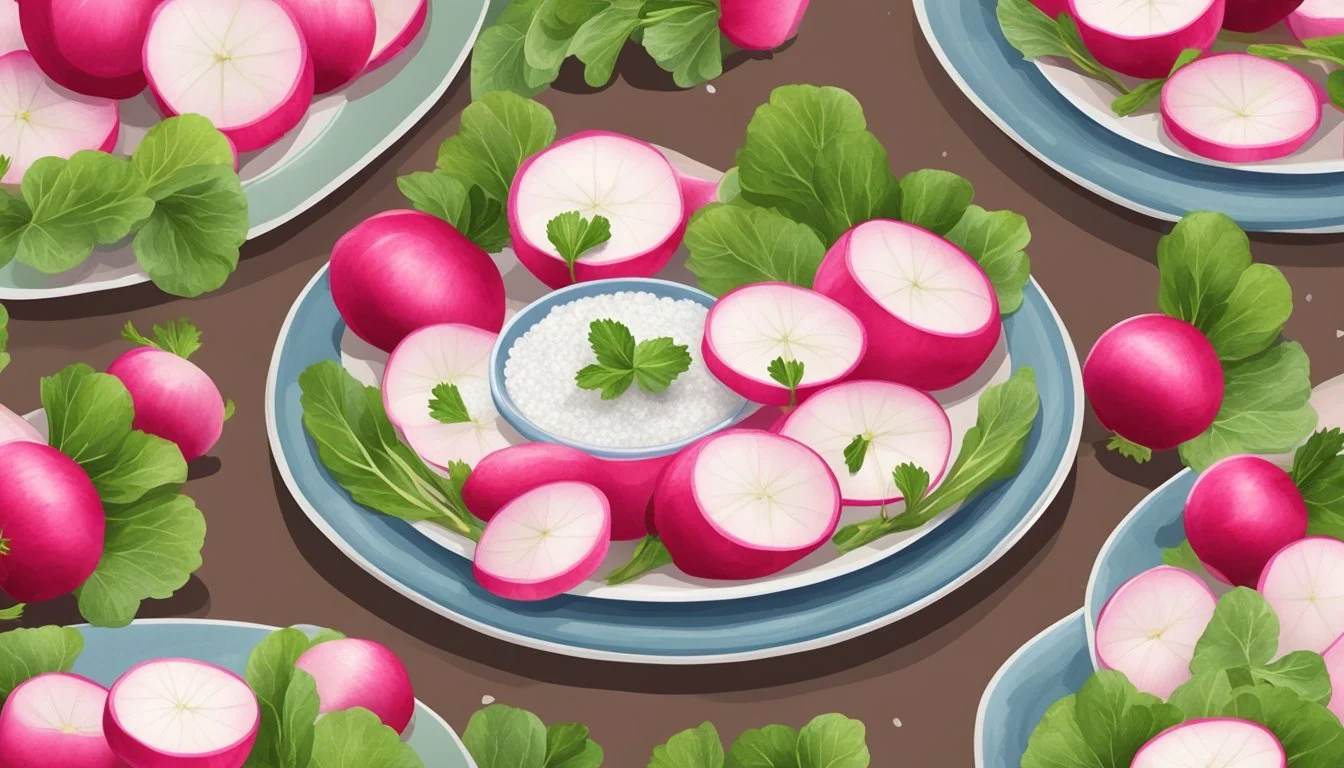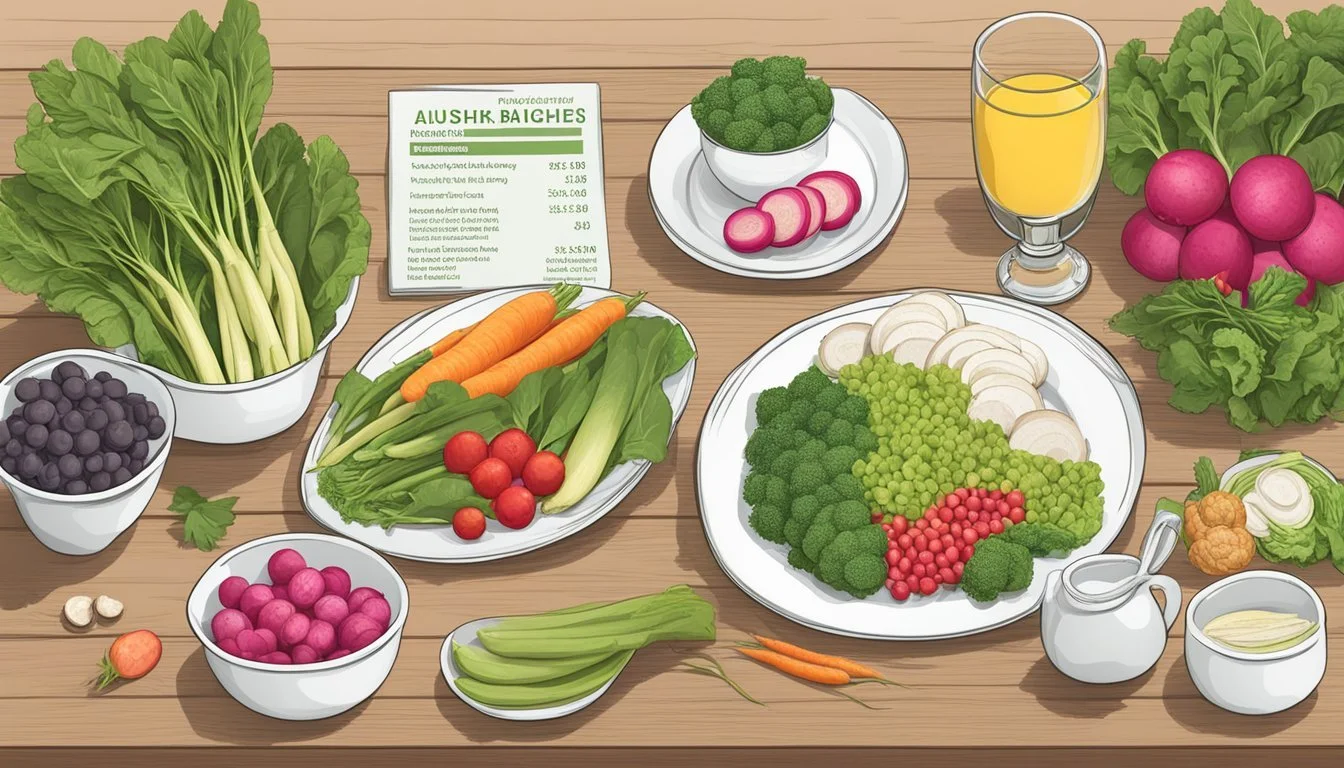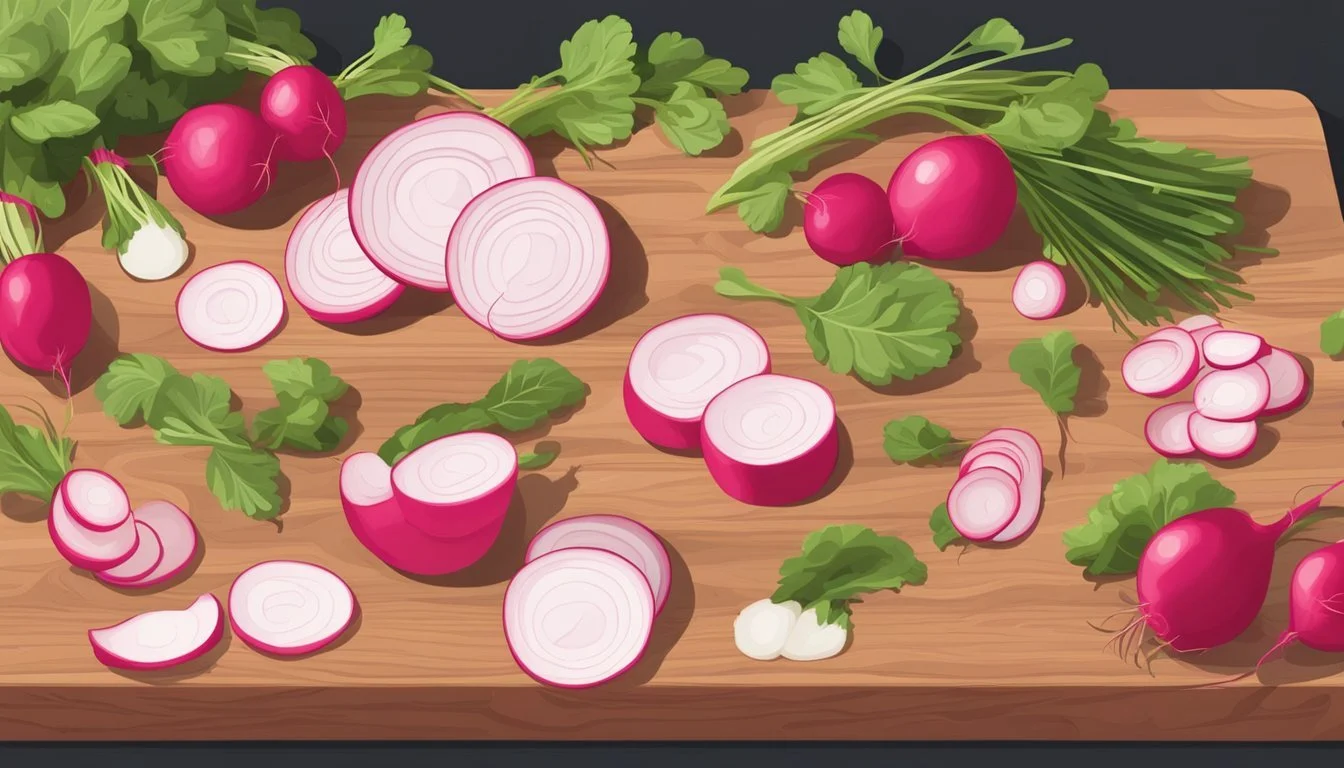French Breakfast Radish Substitutes
Best Alternatives for Your Recipes
Looking to infuse your dishes with the crisp, mildly peppery bite of French Breakfast Radishes but can't find them in your local market? Fortunately, there are several fantastic substitutes available that can deliver similar flavors and textures. Jicama, with its sweet and nutty flavor, can be used as a 1:1 substitute for radishes in salads, bringing a comparable crunch.
Other viable alternatives include kohlrabi, which offers a slightly sweeter taste but still maintains the desired crispness. Both of these options allow for variety in your cuisine while staying true to the essence of traditional radish recipes. For those who enjoy cooked applications, consider sautéeing these substitutes with garlic and fresh herbs for a delicious accompaniment to any meal.
Exploring these substitutes not only helps maintain the integrity of your dish but also broadens your culinary horizons. Embracing these alternatives ensures that your culinary creations remain vibrant and flavorful, even without the specific availability of French Breakfast Radishes.
Understanding French Breakfast Radishes
French Breakfast Radishes offer a unique combination of a mild peppery flavor and a crisp texture. Their historical significance and distinctive cultivar characteristics set them apart from other radish varieties.
Historical Significance
French Breakfast Radishes have a long-standing presence in French cuisine. They were traditionally consumed in the morning alongside buttered bread and salt, a practice that dates back to 19th-century France.
This radish became popular due to its sweeter flavor and ease of cultivation.
Originally grown in the region around Paris, they quickly spread to other areas due to their appealing taste and versatility.
They continue to be a staple in French markets and cuisine, representing a blend of history and culinary tradition.
Cultivar Characteristics
French Breakfast Radishes are distinct due to their oblong shape and crisp texture. Typically, they are about 2-4 inches long with a red exterior that fades to white at the tip.
The flavor is mild yet peppery, making them perfect for eating raw.
These radishes are also known for their edible leafy greens, adding both taste and texture to dishes.
They thrive in cool climates and are usually ready for harvest within 3-4 weeks of planting. Their ease of growth and unique characteristics make them a favored choice for both home gardeners and professional chefs.
The ability to be eaten raw or cooked further enhances their versatility in various culinary applications.
Common Uses in Cuisine
French breakfast radishes, known for their mild flavor and crunchy texture, are versatile in many culinary applications. They can be enjoyed both raw and cooked, adding unique flavors and textures to various dishes.
Raw Preparations
French breakfast radishes are often enjoyed raw due to their crispness and mild peppery flavor. They can be sliced thinly and added to salads where they provide a refreshing crunch. Another common practice is serving them with butter and a sprinkle of sea salt. This method, known as buttered radishes, pairs well with a toasted baguette. For a quick side dish, radishes can be combined with pesto and fresh herbs.
Cooked Dishes
French breakfast radishes also shine in cooked dishes, offering a different dimension to their flavor. Roasted radishes become tender and slightly caramelized, making a delicious side dish. They can also be sautéed with radish greens and butter for a simple yet flavorful preparation. Additionally, these radishes can be pickled, adding tanginess to dishes like tacos or sandwiches. For a more elaborate dish, they can be included in eggs for a unique twist on traditional breakfast items.
Nutritional Profile
French breakfast radishes are nutritious, offering a range of vitamins and antioxidants that benefit overall health. They are especially noted for their Vitamin C content and antioxidant properties.
Vitamin Content
French breakfast radishes are packed with Vitamin C, a crucial nutrient for the immune system. This vitamin supports collagen formation, essential for skin health. Beyond that, it's also important for wound healing and maintaining healthy teeth and bones.
Folate is another significant vitamin in French breakfast radishes. Folates are essential for DNA synthesis and repair, playing a crucial role during periods of rapid growth such as pregnancy and infancy. This nutrient also aids in red blood cell formation and supports overall cardiovascular health.
Antioxidant Benefits
One of the standout qualities of French breakfast radishes is their antioxidant properties. These radishes contain compounds like anthocyanins and isothiocyanates, which help neutralize harmful free radicals in the body.
Anthocyanins provide anti-inflammatory benefits, potentially reducing the risk of chronic diseases. Isothiocyanates have been studied for their potential cancer-preventative properties by inducing apoptosis, or cell death, in cancer cells. Regular consumption of foods rich in antioxidants can support long-term health and potentially mitigate age-related conditions.
Substituting French Breakfast Radishes
For those seeking substitutes for French breakfast radishes, there are several viable options that offer similar textures and flavors. The following details cover a variety of radish substitutes and their specific qualities.
Substitutes Overview
Jicama is known for its sweet and nutty flavor, making it a suitable replacement for French breakfast radishes in raw applications. It provides a similar crunch, particularly effective in salads.
Kohlrabi also offers a slightly sweet taste that complements many dishes where French breakfast radishes are used. Its texture is akin to that of radishes, providing a crisp bite whether raw or cooked.
Daikon Radish can be used in place of French breakfast radishes particularly in cooked dishes. It has a mild flavor that becomes sweeter when cooked, adding versatility.
Other substitutes include Turnips, Carrots, and Beetroot, each bringing their unique flavors and textures to the table. Turnips offer a mild flavor, while carrots add a bit of sweetness, and beetroot brings a distinct earthy note.
Radish Varieties Comparison
When comparing radish varieties, it’s essential to consider both flavor and texture. French breakfast radishes have a mild peppery flavor and a crisp texture, making them popular in both raw and cooked forms.
Cherry Belle Radishes are another variety that shares a similar texture with a slightly spicier kick. They are round and often used in salads.
Watermelon Radishes stand out with their vibrant pink interior and mild flavor. They are slightly sweeter than French breakfast radishes and can be used similarly in dishes.
Horseradish Root offers a much stronger, pungent flavor, which might be too intense for some dishes but can bring a unique heat if used sparingly.
Fennel, while not a radish, can sometimes serve as a substitute due to its crunchy texture and mild sweet flavor, making it suitable for salads and garnishes.
Considering these substitutes can help maintain the desired flavor profile and texture of your dishes when French breakfast radishes are not available.
Selecting and Storing Tips
When selecting French breakfast radishes, look for key signs of freshness and quality. Proper storage techniques ensure they retain their crisp texture and mild peppery flavor for a longer period.
Freshness Indicators
Choose radishes that are bright in color, ranging from vibrant pink to white. The exterior should be smooth, free of cracks, blemishes, or wilting. Firmness is a crucial indicator; they should feel solid and dense, not soft or spongy. The presence of fresh, green leafy tops can also signify freshness, although they should be removed before storing.
Avoid radishes showing signs of yellowing, splitting, or shriveling, as these are indicators of age and poor quality.
Optimal Storage Methods
After purchase, remove the leafy tops to prevent moisture loss from the roots. Clean the radishes thoroughly under running water and let them dry. Store them in a plastic or silicone bag, ensuring it's loosely closed to allow some air circulation.
Place the bag in the vegetable crisper drawer of your refrigerator. Radishes stored this way can stay fresh for about a week. For longer storage, blanching in boiling water for 2-3 minutes, followed by an ice water bath, can extend their shelf life when frozen in a freezer-safe bag.
Enhancing Dishes with French Breakfast Radishes
French breakfast radishes, with their mild peppery flavor and crisp texture, can greatly enhance various dishes. Their versatility allows them to pair well with different herbs and spices and to be partnered with complementary ingredients for a delightful culinary experience.
Herb and Spice Pairings
French breakfast radishes can be paired with a variety of herbs and spices to enhance their natural flavors. Fresh thyme adds a subtle earthiness that balances the radish's crispness. Garlic can be sautéed with radishes for a fragrant and robust combination.
Black pepper and kosher salt are also essential. They bring out the radish's mild pepperiness without overwhelming it. For a bolder taste, a pinch of paprika or cumin can be used.
Herb and Spice Examples:
Fresh thyme
Garlic
Black pepper
Kosher salt
Paprika
Cumin
Each of these pairings can elevate the simple radish into a sophisticated component of your dishes.
Accompaniment Ideas
French breakfast radishes shine when served with the right accompaniments. They can be dipped in butter or placed on baguette slices for a classic French snack.
Asparagus is an excellent vegetable to pair with radishes, either in a salad or a sautéed dish. Adding gluten-free grains like quinoa can make the dish suitable for those with dietary restrictions.
Accompaniment Examples:
Butter for dipping or slathering
Toasted baguette slices
Sautéed asparagus
Quinoa or other gluten-free grains
These ingredients enhance the radishes' texture and flavor, making them the star of any meal.
Preparation Techniques
Preparing French breakfast radishes can be done efficiently with the right cutting and cooking techniques. Consistent slicing, sautéing, and toasting help maintain their flavor and texture, enhancing their use in various dishes.
Cutting and Slicing
For French breakfast radishes, start by removing the leafy tops and thin roots. This radish variety can be sliced lengthwise or into rounds, maintaining uniformity to ensure even cooking. Lengthwise slicing is preferable for dishes where presentation matters. Alternatively, cutting into thin rounds makes the radish suitable for salads and garnishes. Use a sharp knife to prevent bruising and achieve clean cuts. For an elegant touch, consider slicing at an angle to create elongated pieces that enhance visual appeal.
Cooking Methods
Sautéing and toasting are common methods to prepare French breakfast radishes. To sauté, heat butter or olive oil in a skillet over medium heat. Add sliced radishes, cut side down, and cook for about 5 minutes until golden brown. Include herbs like rosemary or thyme and season with salt for added flavor. Toasting radishes involves baking them on a parchment-lined sheet at 400°F. Brush with olive oil on both sides, baking each side for 6-8 minutes until lightly toasted. This method creates a crunchy texture, perfect for single servings or as a topping on toast.








